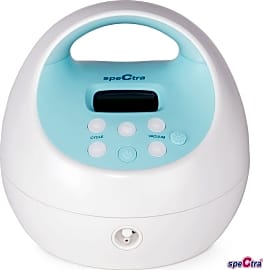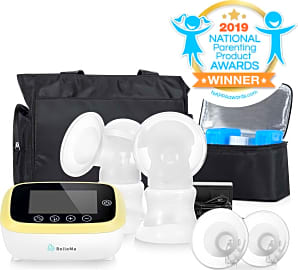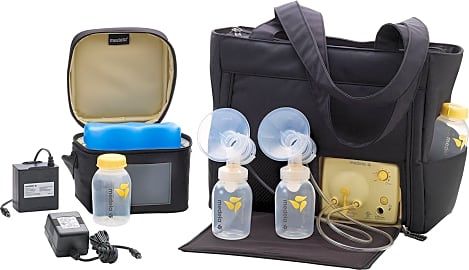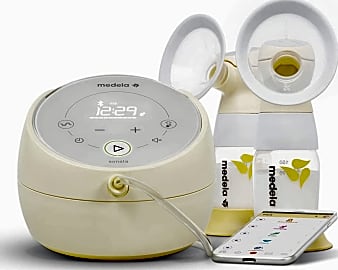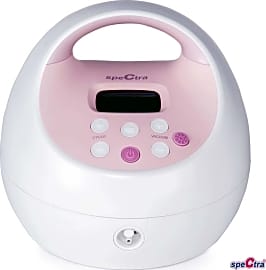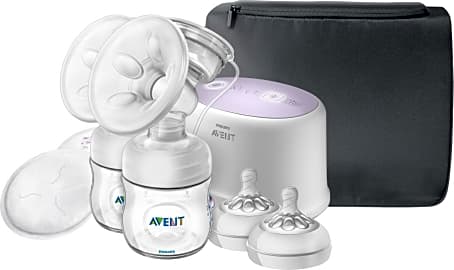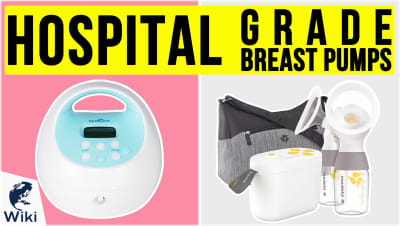The 10 Best Double Breast Pumps

This wiki has been updated 40 times since it was first published in April of 2015. Designed for comfort, versatility, and ease of use, a well-made and reliable double breast pump is the ultimate solution for lactation support. Whether you're building a backup supply, nursing multiple children, coping with latch issues, or seeking relief for mastitis or engorgement, you're sure to find a worthy model to meet your needs in our comprehensive selection. When users buy our independently chosen editorial choices, we may earn commissions to help fund the Wiki.
Editor's Notes
May 08, 2020:
Of all the boxes you want a good pump to check, noise level can be massively important, as these devices let you set aside milk when you're ready to do so, without needing your baby to help. That means, if the kiddo is asleep, you don't want your pump to be the thing that wakes them up. That's ultimately why we sent off the Evenflo Advanced, as its noise level was too high for use anywhere near a lightly sleeping child.
In its place, we included the innovative Willow Wearable, which is a pair of hands-free devices you control from the convenience of your phone. In all likelihood, this is the direction most of these companies will go in in years to come — even heavy hitters like Spectra and BellaMa — developing apps to control their hardware. For now, their top-of-the-line systems, the BelleMa Euphoria Pro and the Spectra S1, provide a more traditional experience than the Willow. That S1 is a hospital grade model, to boot, so there's a significantly reduced chance of backflow creating any kind of contamination.
Special Honors
Sarah Wells Bags While a few models come with totes of some kind, these are often something of an afterthought, suffering from weak seams and a bland appearance. But packing your portable device in one of the bags from this company ensures that you have something both durable and attractive. There are plenty of styles and patterns to choose from, though some of them may cost more than the pump itself. sarahwellsbags.com
A Brief History Of Infant Nutrition
If such a statement seems hyperbolic, consider that it was mother’s milk from the goddess Hera that imbued the mythical demigod Hercules with his legendary invincibility.
In human history, no bodily fluid has a status as fraught, nor as vaunted, as that of breastmilk. If such a statement seems hyperbolic, consider that it was mother’s milk from the goddess Hera that imbued the mythical demigod Hercules with his legendary invincibility. In ancient Egypt, royal infants were fed at the breasts of wet nurses, who — in spite of their lowly position as servants in the social hierarchy — were held in such high regard that their own offspring were counted among the Pharaoh’s relatives.
Nursing by proxy is historically associated with society’s elites, but the practice has occasionally been taken up by the masses. In medieval Europe, for example, there was a booming market in breastfeeding surrogacy, with 50-90 percent of children being nursed by someone other than their own mothers. At that time, the nursing of one's own offspring might have been seen as distasteful or even perverse. In an intriguing reversal, attitudes toward maternal substitutes have shifted so far that westerners were rather nonplussed when actress and activist Salma Hayek famously breastfed a starving woman’s child in Sierra Leone.
Although the practice of sharing breastfeeding responsibilities among various lactating women has become widely stigmatized in the post-industrial world, the custom persists in some cultures. In outer Mongolia, breastmilk is so revered that children may nurse with gusto in practically any setting until they self-wean, and surplus breastmilk is routinely offered to — and enjoyed by — adults. When Canadian mother Ruth Kamnitzer traveled to remote areas of the country with her family, she was surprised by the untroubled reactions of Mongolians to situations westerners would find absolutely mortifying, like getting an eyeful of a stranger's breastmilk when a nursing infant abruptly un-latches in public.
The Bottle And The Boob
While architectural evidence suggests occasional attempts throughout history to feed our young via man-made vessels, and milk collection devices have been around for centuries, it’s only quite recently that lactation support has come to routinely involve anything more complicated than suckling at one bosom or another in the time-honored fashion. Indeed, most alternative infant feeding regimens seem to have met with limited success, if not catastrophic failure, until the 20th century, when the advent of infant formula — alongside improvements in sanitation and hygiene — facilitated the rise of bottle feeding as a viable means of delivering nourishment to babies.
As is often the case, the development of new technologies led to a radical, albeit temporary shift away from traditional methods and mores, with the bottle eclipsing the breast in 78 percent of American households by the early 1970s. For a time, westerners came to see formula as nutritionally superior to breastmilk, a perception that helped create widespread demand for the product and established a global retail market that continues to rival breastfeeding as the preferred source of nutrition for infants born today.
The first mechanical breast pump was patented in 1854. The patent, granted to Orwell H. Needham, was for a device with flexible rubber flanges to replace their immediate predecessors. Not only was Needham’s version more comfortable to use than the glass funnels it was meant to replace, it was also more effective, with the flanges’ softness and elasticity more closely mimicking the suckling action of an infant at the breast. Between the late 19th and early 20th centuries, milk expression technology evolved to incorporate pistons and removable bottles, further improving the systems’ portability and efficiency. The same sanitation and hygiene improvements that enabled infant formula to become an industry unto itself helped fuel further advances in breast pump technology over the ensuing years.
Extraordinary Measures
The ubiquity of milk expression systems only dates back a couple of decades or so, since Swiss manufacturer Medela introduced the first portable electric model designed for consumers in the early 1990s. But lactation support in some form has long been an essential resource in cases where — for one reason or another — unassisted lactation is insufficient or impossible. It’s these extraordinary situations that have often driven new developments in infant feeding tools and technologies.
For multiple births, surrogate pregnancies, adoptive families, preemies, infants with latch issues, and mothers with inverted nipples or mastitis, access to a good-quality breast pump can be absolutely vital. One that can empty both breasts simultaneously — and can be used at home, in the workplace, or while traveling — is all the better. Not only can a breast pump be used to produce an everyday supply for bottle or tube-feeding, it can also play a key role in inducing lactation, as well as building and maintaining supply during illness or post-operative recovery. Of course, that is to say nothing of the busy working families who are also the grateful beneficiaries of the increasingly convenient and affordable infant feeding options available to them.
As human milk experiences a renaissance in public perception, consumer breast pump access and convenience has given rise to the phenomenon of milk banking, which raises controversies over milk-sharing and lactation proxies anew. Pasteurized breastmilk was even featured in a limited run of ice cream called, much to a certain performing artist’s chagrin, Baby Gaga. With the number of families choosing to engage in what’s now known as extended breastfeeding on the rise again, and the matter of breastmilk as a marketable resource entering public discourse, it seems likely that the popularity and utility of milk expression technologies will continue to increase. Whether consumption of breastmilk by older children or adults will ever (re-)enter the mainstream, though, remains to be seen. In any event, it can't hurt to have the right equipment for the job, however reminiscent of dairy farming it may seem.


